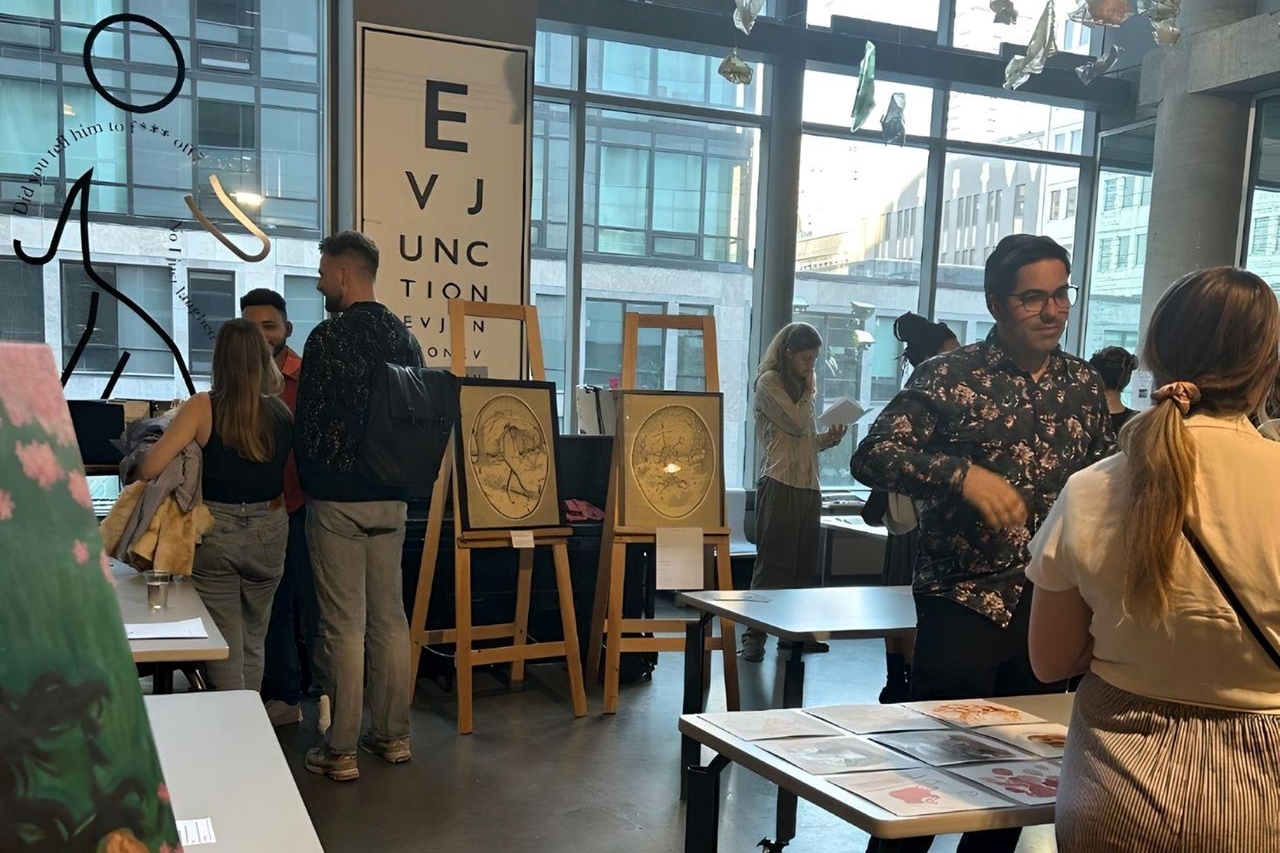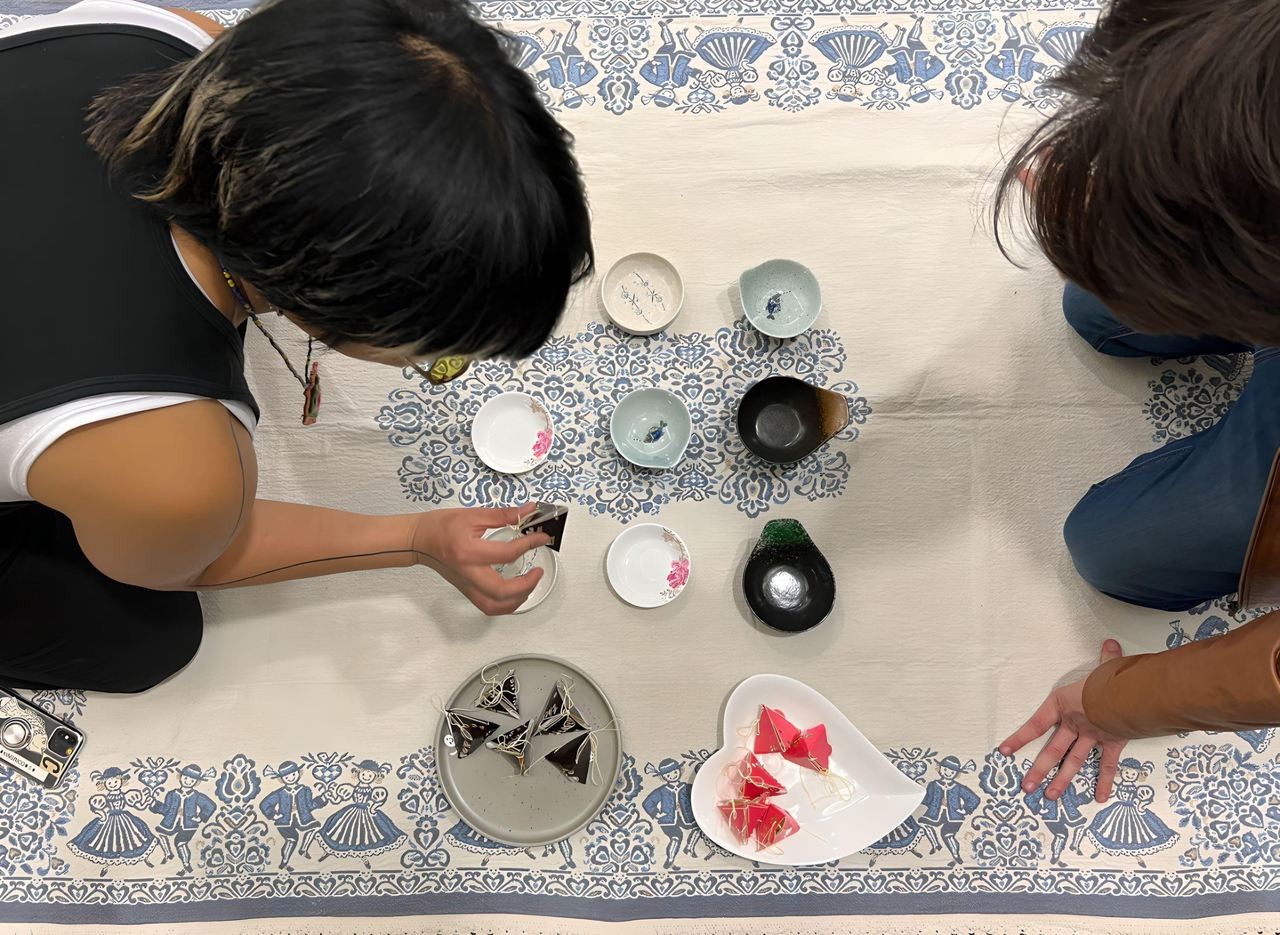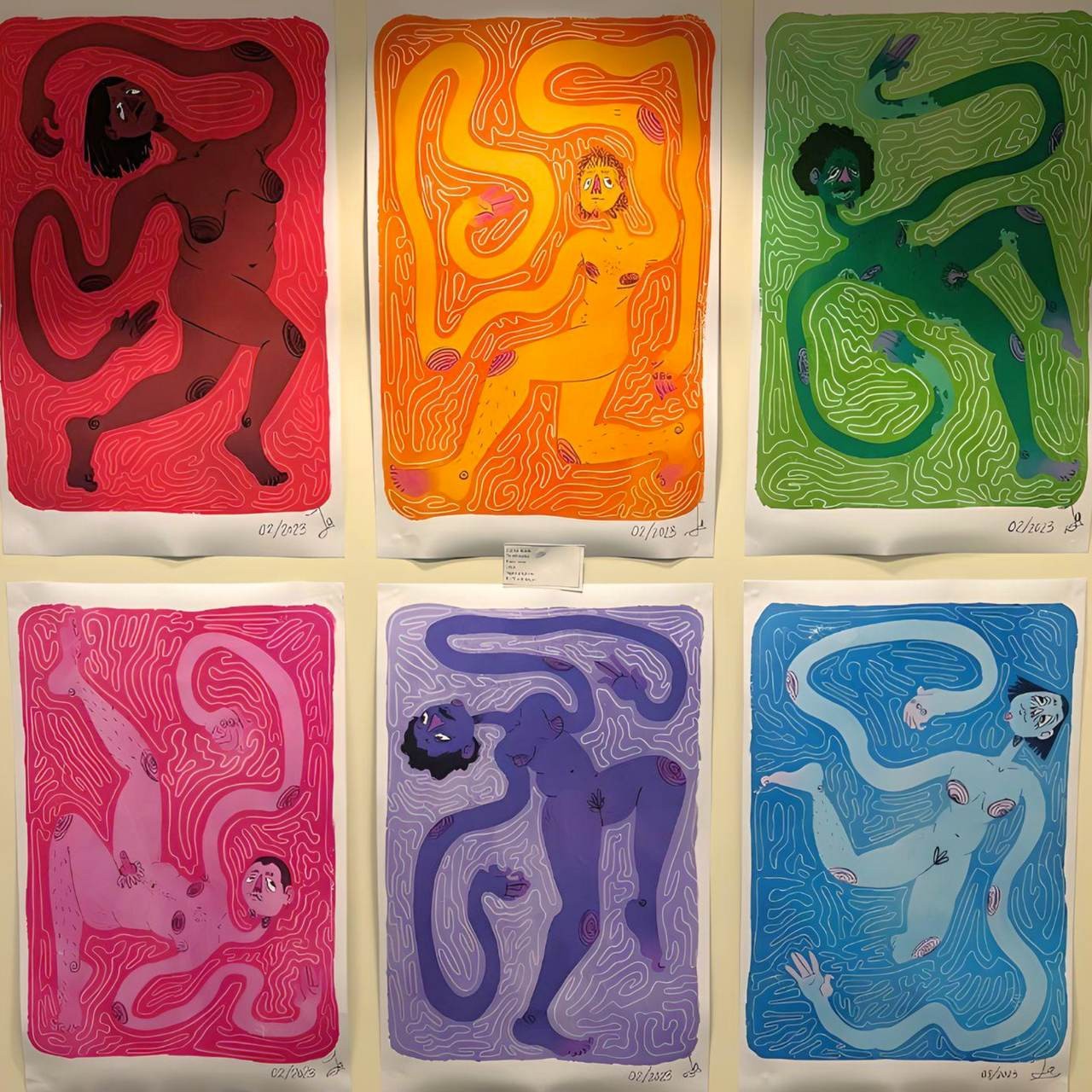Fine arts students' year-end exhibition focuses on process over product
 Going Too FFAR: An Exhibition at the End of the Year, April 14, 2023. | Photo: Sandra Huber
Going Too FFAR: An Exhibition at the End of the Year, April 14, 2023. | Photo: Sandra Huber
At the year-end exhibition for the interdisciplinary arts course, Keywords Reading the Arts Across the Disciplines (FFAR 250), undergraduate students from the Faculty of Fine Arts showcased their works and celebrated with peers, family and friends.
Going Too FFAR: An Exhibition at the End of the Year took place on April 14 in the EV Building. It featured 40-plus works-in-progress from various disciplines, including performances, scripts for plays, ceramics, sound pieces, conceptual art, video art, paintings, drawings, graphic design, participatory work and more.
With a focus on process over product, students were encouraged to bring their work as-is, embracing creativity, imperfection and spontaneity.
Throughout the year, students built intellectual and artistic works around a series of keywords: framing, engaging, working, archive, care, home, participation, nature, failure, magic, time, information, the body, the future and rest.
 Artwork: playing with sweets, by nini.
Bowls and tablecloth from the artist’s home; homemade candy, cardboard and thread, 2023. | Photo: Petrija Dos Santos
Artwork: playing with sweets, by nini.
Bowls and tablecloth from the artist’s home; homemade candy, cardboard and thread, 2023. | Photo: Petrija Dos Santos
A unique space for students to expand their critical thinking
Keywords Reading the Arts Across the Disciplines is a year-long, interdisciplinary arts course that brings together fine arts students from all departments into collaboration and conversation.
"What makes this course unique is that it offers a space for students to come together with peers outside of their chosen discipline to expand their critical thinking, experiment with their work and take risks that they might not be able to take within their degree pathway," says Sandra Huber, assistant professor and area coordinator of interdisciplinary studies and practices in fine arts.
Huber emphasizes that the overall exhibition experience was generous, supportive and communal. "The work reflected the intellectual and creative spirit fostered by both the teaching team and students," she says. "It speaks to the importance of interdisciplinarity in the fine arts and the strength of our undergraduate students."
Huber adds that the exhibition was an important experience for students, given the restrictions and challenges of the COVID-19 pandemic over the past few years. "This was an opportunity for students to share their work outside the class, studio and home environment. It provided a wider space for discussion, celebration and recognition."
 Artwork: Jeanne Lemay, To: all bodies, From: mine, digital art prints, 2023. | Photo: Petrija Dos Santos.
Artwork: Jeanne Lemay, To: all bodies, From: mine, digital art prints, 2023. | Photo: Petrija Dos Santos.
'Collaborating and engaging with artists from other disciplines has been inspiring'
"The exhibit was an amazing opportunity to see works by artists from the entire faculty," says Noah Rubel, a first-year student in the Department of Studio Arts who presented a digital piece at the exhibit. "Seeing how other artists engage with their practice was wonderful."
Rubel adds that he's now more mindful of how he talks and writes about his work.
Fellow studio arts student Miguel Marcheterre-Pina agrees. "The course really helped me write about my work. It's a crucial aspect of our practice, and I'm glad I learned about it in my first year."
For Marcelo Pires, the exhibition experience was brand new. "This was the first time displaying my art, and I learned a lot about the process—from placement and lighting to organizing the space to inviting people and discussing my piece with the audience."
"Throughout the year, we reflected on keywords," says the studio arts student. "It helped us understand our approach to making art, engaging the public and our impact as artists."
Valeria Valle, a studio arts student with a concentration in fibres and material practices, says the exhibition’s focus on process rather than the final product allowed her to push the boundaries of her practice and embrace the possibility of failure.
“It was a safe space to get out of my comfort zone and try something new. For me, my first performance.”
For studio arts student Lia Sullivan, the course connected her to the greater arts community. "Collaborating and engaging with artists from other disciplines has been inspiring," she says. "The course allowed me to open up to other creatives and build connections throughout the year while expanding my own creative toolkit."
Sullivan adds that sharing her work with friends and family at the exhibition was a wonderful way to wrap up the year.
Find out more about Concordia’s Faculty of Fine Arts.